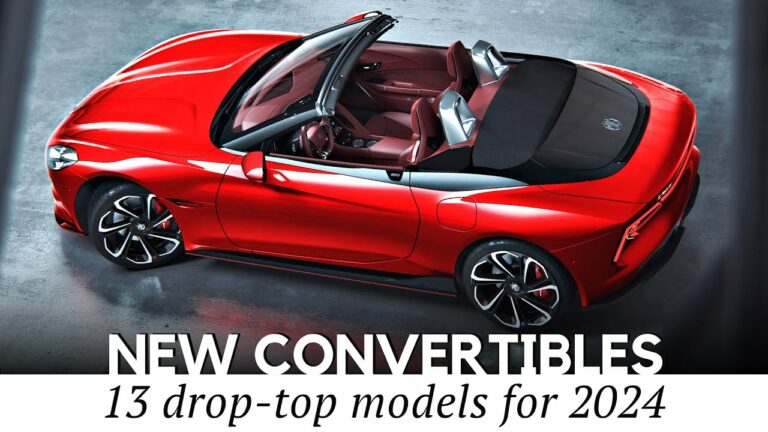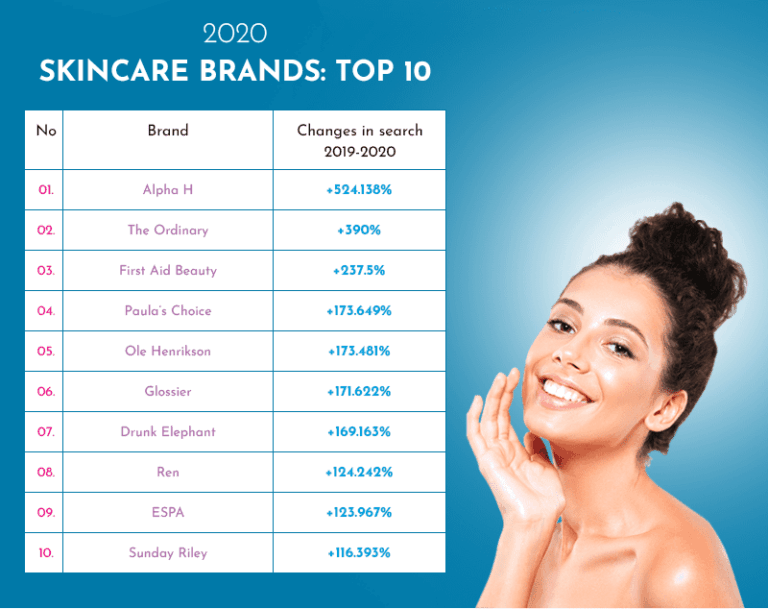Top Selling Car Brands In America: Decoding the Dynamics of the U.S. Automotive Market
Top Selling Car Brands In America: Decoding the Dynamics of the U.S. Automotive Market cars.truckstrend.com
The American automotive market is a colossal and dynamic entity, a vibrant tapestry woven from consumer preferences, economic shifts, technological advancements, and fierce competition. Understanding the "Top Selling Car Brands In America" isn’t merely about listing names; it’s about dissecting the very pulse of the nation’s transportation habits, revealing insights into what drives consumer choice, shapes manufacturing strategies, and impacts the broader economy. These top-selling brands are the titans of the industry, their success reflecting a delicate balance of innovation, reliability, value, and a deep understanding of the American driver’s needs and desires. For anyone looking to purchase a new vehicle, invest in the automotive sector, or simply understand the forces shaping the roads we drive on, comprehending these market leaders is absolutely essential.
The American Automotive Landscape: A Snapshot of Power and Preference
Top Selling Car Brands In America: Decoding the Dynamics of the U.S. Automotive Market
The U.S. automotive market is uniquely characterized by its love affair with larger vehicles – trucks and SUVs dominate sales charts, a trend that has steadily intensified over the past decade. This shift away from traditional sedans reflects evolving lifestyles, a desire for versatility, and often, the need for increased cargo and passenger capacity. Factors such as fluctuating fuel prices, interest rates, consumer confidence, and the relentless march of technological innovation (especially in electrification and driver-assist features) constantly reshape the competitive landscape. While global brands have a significant footprint, American domestic manufacturers retain a powerful hold, particularly in the lucrative truck segment.
Decoding the Leaders: Who Sells the Most?
While exact rankings can fluctuate quarter-to-quarter and year-to-year, a consistent core of brands routinely tops the sales charts in America. These stalwarts have mastered the art of appealing to a broad spectrum of buyers.
- Ford: A perennial powerhouse, Ford’s dominance is largely anchored by the F-Series pickup truck, which has been America’s best-selling vehicle for decades. Beyond trucks, Ford offers a robust lineup of SUVs (Explorer, Escape, Bronco Sport) and is making significant strides in the EV market with models like the Mustang Mach-E and F-150 Lightning. Their strength lies in a combination of heritage, rugged capability, and continuous innovation.
- Chevrolet: As the flagship brand of General Motors (GM), Chevrolet consistently ranks among the top two or three. Its Silverado pickup is a direct competitor to the F-Series, securing massive sales. Chevrolet also boasts a strong SUV portfolio (Tahoe, Traverse, Equinox) and a growing presence in electric vehicles (Bolt EV/EUV, Blazer EV, Equinox EV). Their appeal often stems from a combination of reliability, strong performance, and a comprehensive dealer network.
- Toyota: A titan of reliability and efficiency, Toyota consistently leads among foreign brands. Their success is built on a reputation for quality, durability, and strong resale values. Popular models include the RAV4 (often the best-selling non-pickup vehicle), Camry, Highlander, and Tacoma pickup. Toyota’s early and sustained commitment to hybrid technology has also given it a significant edge.
- Honda: Known for its refined engineering, fuel efficiency, and strong resale values, Honda remains a top choice for many American consumers. The CR-V and HR-V SUVs are consistent best-sellers, alongside the Civic and Accord sedans. Honda appeals to buyers seeking practical, reliable, and well-designed vehicles.
- Ram: Part of the Stellantis group, Ram has carved out a formidable niche solely focused on pickup trucks. Its Ram 1500 and heavy-duty trucks are renowned for their comfort, powerful engines, and impressive towing capabilities, making it a strong contender in the lucrative truck segment.
- Nissan: While experiencing some fluctuations, Nissan remains a significant player, particularly with its Rogue SUV, a consistently popular choice in the compact SUV segment. The Altima sedan and Frontier pickup also contribute to its sales volume.
- Hyundai & Kia: These Korean sister brands have made incredible strides in recent years, offering compelling designs, impressive technology, long warranties, and competitive pricing. Models like the Hyundai Tucson, Santa Fe, Elantra, and Kia Sportage, Telluride, and Forte have rapidly gained market share, appealing to value-conscious buyers who don’t want to compromise on features or style.

Key Factors Driving Brand Success

The consistent performance of these top-selling brands isn’t accidental. It’s the result of strategic planning and execution across several critical areas:
- Reliability and Durability: For most American car buyers, a vehicle is a significant investment. Brands that consistently deliver dependable, long-lasting vehicles with low maintenance costs earn immense trust and repeat business.
- Value Proposition: This encompasses not just the initial purchase price but also fuel efficiency, insurance costs, maintenance expenses, and, crucially, resale value. Brands that offer a strong balance across these factors are highly attractive.
- Brand Loyalty and Heritage: Especially for the "Big Three" (Ford, GM, Stellantis), decades of history, cultural significance, and strong brand identity foster deep loyalty among generations of buyers.
- Innovation and Technology: Modern buyers expect advanced safety features (e.g., automatic emergency braking, lane-keeping assist), sophisticated infotainment systems, and increasingly, electrified powertrain options. Brands that quickly adopt and refine these technologies stay ahead.
- Diverse Product Lineup: The ability to offer a wide range of vehicles—from compact sedans to full-size trucks, and increasingly, EVs—allows a brand to cater to diverse consumer needs and adapt to changing market demands.
- Marketing and Dealership Network: Extensive advertising campaigns and a widespread, well-supported dealership network are crucial for reaching customers, providing sales support, and offering reliable post-purchase service.

Understanding Consumer Preferences and Trends
The American car buyer is a complex entity, and understanding their evolving preferences is key to a brand’s success.
- The SUV/Truck Domination: This isn’t just a trend; it’s the new norm. Higher seating positions, increased cargo space, towing capabilities, and a perceived sense of safety continue to drive sales in these segments.
- Electrification on the Rise: While still a smaller portion of the overall market, electric vehicle (EV) sales are growing rapidly. Brands like Tesla have pioneered this space, but traditional automakers are investing billions to compete, offering compelling EV versions of their popular models.
- Safety First: With advancements in safety technology, consumers increasingly prioritize vehicles with high safety ratings and advanced driver-assistance systems (ADAS).
- Connectivity and Infotainment: Seamless smartphone integration (Apple CarPlay, Android Auto), large touchscreens, and advanced navigation systems are no longer luxuries but expected features.
- Budget vs. Luxury: While top-selling lists often feature mainstream brands, there’s a strong underlying current of buyers seeking both extreme value and high-end luxury, influencing overall market dynamics.
Practical Advice for Car Buyers
Navigating the vast array of options offered by top-selling brands can be overwhelming. Here’s some practical advice:
- Define Your Needs and Budget: Before looking at brands, honestly assess what you need (passenger capacity, cargo, towing, fuel economy) and what you can comfortably afford (purchase price, insurance, fuel, maintenance).
- Research Beyond the Hype: While top-selling brands are popular for a reason, delve into specific models. A brand might be known for its trucks, but its sedans might not suit you.
- Prioritize Reliability Ratings: Consult independent sources like Consumer Reports, J.D. Power, and Edmunds for reliability scores and owner satisfaction surveys. These insights can save you headaches and money down the road.
- Test Drive Multiple Options: Don’t limit yourself to one brand or even one model. Drive competitors to get a feel for different handling characteristics, interior comforts, and technology interfaces.
- Consider Total Cost of Ownership: Factor in not just the sticker price, but also estimated fuel costs, insurance premiums, routine maintenance, and potential repair costs.
- Explore Financing and Lease Options: Understand the pros and cons of buying versus leasing, and shop around for the best interest rates.
- Don’t Forget Resale Value: Brands known for strong resale value (like Toyota and Honda) can save you money when it’s time to trade in or sell.
Challenges and Future Outlook
Even for the top-selling brands, the road ahead is not without its bumps.
- Supply Chain Issues: The ongoing global semiconductor shortage and other supply chain disruptions continue to impact vehicle production and availability, affecting sales volumes.
- Rising Interest Rates: Higher borrowing costs can dampen consumer demand, especially for larger, more expensive vehicles.
- The EV Transition: While an opportunity, the massive investment required for EV development, battery production, and charging infrastructure presents significant financial and logistical challenges. Consumer adoption rates, range anxiety, and charging availability also play a role.
- Competition from New Entrants: EV startups and even tech companies are entering the automotive space, bringing fresh competition and innovative business models.
- Future Trends: Autonomous driving technology, vehicle subscription models, and a stronger focus on sustainability will continue to reshape the industry.
Table: Key Information for Top-Selling Car Brands in America (Illustrative)
| Brand | Primary Market Strength(s) | Popular Models (Examples) | Typical Starting Price Range (Broad) | Key Market Factor |
|---|---|---|---|---|
| Ford | Trucks, SUVs, American Heritage, EV Growth | F-Series, Explorer, Escape, Mustang Mach-E | $25,000 – $70,000+ | Dominant Truck Sales, Strong SUV Portfolio |
| Chevrolet | Trucks, SUVs, Broad Lineup, EV Expansion | Silverado, Equinox, Tahoe, Bolt EV | $24,000 – $75,000+ | Major Truck Competitor, Diverse Offerings |
| Toyota | Reliability, Efficiency, Resale Value, Hybrids | RAV4, Camry, Highlander, Tacoma, Prius | $23,000 – $55,000+ | Unmatched Reliability, Hybrid Leadership |
| Honda | Refinement, Efficiency, Value, Sedans/SUVs | CR-V, Civic, Accord, HR-V | $22,000 – $45,000+ | Balanced Portfolio, High Resale Value |
| Ram | Full-Size Pickup Trucks, Capability | Ram 1500, Ram 2500/3500 | $38,000 – $80,000+ | Truck-Focused, Premium Interior Trucks |
| Nissan | Value-Oriented SUVs, Sedans | Rogue, Altima, Frontier | $20,000 – $40,000+ | Competitive Pricing, Popular Compact SUV |
| Hyundai | Design, Tech, Warranty, Value | Tucson, Santa Fe, Elantra, Kona | $20,000 – $50,000+ | Rapid Growth, Strong Warranty, Feature-Rich |
| Kia | Design, Value, Warranty, SUVs | Sportage, Telluride, Forte, Seltos | $20,000 – $55,000+ | Design-Forward, Value Leader, SUV Popularity |
Note: "Typical Starting Price Range" is highly generalized and varies significantly by model, trim, features, and market conditions. These figures are illustrative and intended to provide a broad idea of where a brand’s entry-level to popular mid-range models might begin.
Frequently Asked Questions (FAQ)
Q1: Which car brand sells the most vehicles in America overall?
A1: While specific rankings can vary by reporting period, Ford and Chevrolet (GM) consistently contend for the top spots in terms of overall brand sales, largely due to their dominant pickup truck sales (Ford F-Series and Chevrolet Silverado). Toyota is typically the top-selling foreign brand.
Q2: Are American car brands still popular in the U.S.?
A2: Absolutely. American brands, particularly Ford and Chevrolet, maintain immense popularity, especially in the highly profitable truck and large SUV segments, often outselling foreign competitors in these categories.
Q3: Why are trucks and SUVs so much more popular than sedans in the U.S.?
A3: Several factors contribute to this: perceived safety, higher driving position, increased cargo and passenger capacity, versatility for various activities (towing, off-roading), and evolving consumer preferences towards more utilitarian and spacious vehicles.
Q4: How important is reliability when choosing a top-selling car brand?
A4: Reliability is paramount. Brands like Toyota and Honda have built their reputation on it, and it’s a key factor for American consumers seeking long-term value, lower maintenance costs, and strong resale value. Independent reliability ratings heavily influence purchasing decisions.
Q5: What role do electric vehicles (EVs) play in the sales of top brands?
A5: While traditional internal combustion engine (ICE) vehicles still dominate sales, EVs are a rapidly growing segment. Top-selling brands are heavily investing in and launching new EV models (e.g., Ford F-150 Lightning, Chevrolet Bolt, Toyota bZ4X). Their ability to successfully transition to EVs will be critical for future sales leadership.
Q6: How can I choose the right car brand for me among the top sellers?
A6: Start by defining your needs (budget, vehicle type, features). Research specific models from the top-selling brands that fit those needs, prioritizing reliability ratings. Test drive multiple options, and consider the total cost of ownership, including fuel, insurance, and maintenance, before making a decision.
Conclusion
The landscape of top-selling car brands in America is a testament to resilience, adaptation, and an unwavering focus on consumer needs. From the rugged utility of American trucks to the dependable efficiency of Japanese sedans and the value-packed innovation of Korean SUVs, these brands embody the diverse desires of the American public. Their continued success is not just a reflection of their current offerings but also their ability to anticipate and shape future trends, particularly in the accelerating shift towards electrification and advanced technology. For car buyers, understanding these market leaders provides a crucial compass, guiding them towards vehicles that are not only popular but also proven, reliable, and well-suited to the demands of modern American life.






